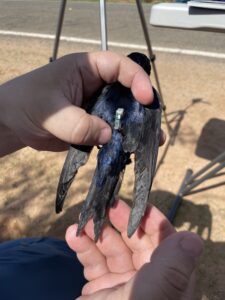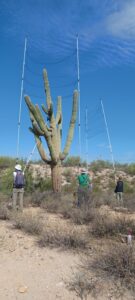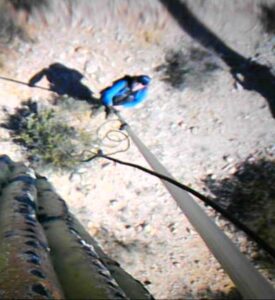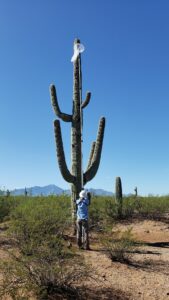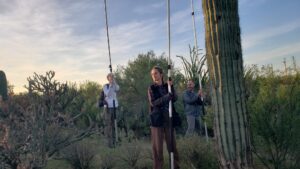







RESEARCH
The Desert Purple Martin Project
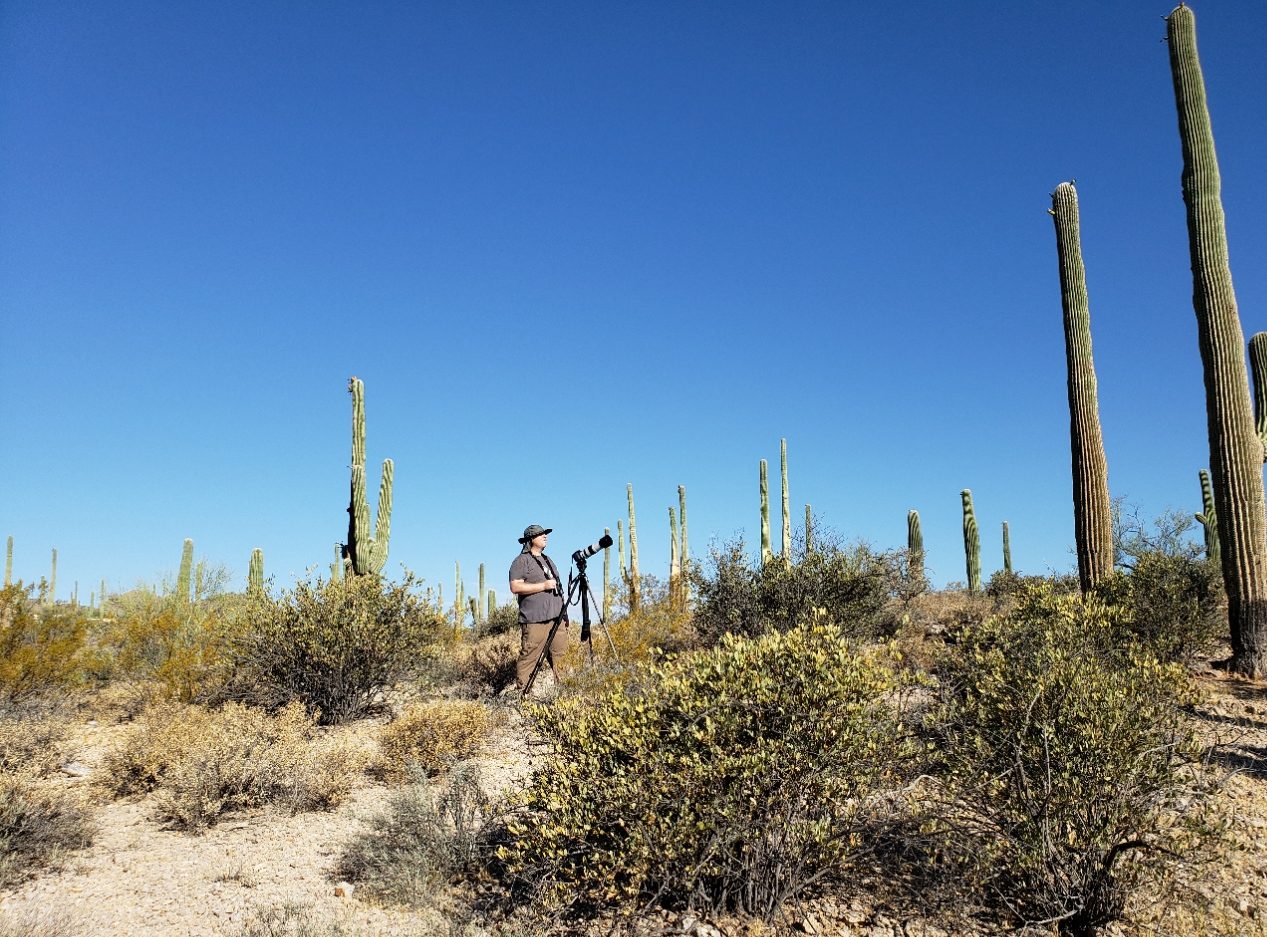
The goal of Tucson Audubon’s Desert Purple Martin Project is to document saguaros and specific nesting holes and document breeding behavior
Ways to Participate in the Project
- Join Tucson Audubon’s Community Science Purple Martin Project Survey Crew. Join the team here.
- If you see or hear Purple Martins anywhere in Southeast Arizona please report them here or enter your sightings into eBird.org
- Report a nesting colony of Purple Martins. Please let us know here.
- Find a feather from a Purple Martin. On these feathers we can learn about the genetics, its wintering and migration path. You could be a part of an important scientific discovery! Please let us know
Map of active and documented martin nesting colonies

Endoscoping
Using long poles outfitted with a camera at the end, scientists can look inside saguaro cavities to find active desert Purple Martin nests. This can be used to learn more about nestling survival rates, development timing, and breeding behavior.
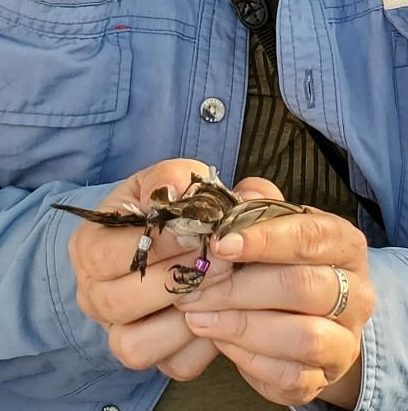
Banding
Birds are outfitted with an aluminum band and a purple band that have unique numbers on them. This way, the bird can be identified again in the future. This is a delicate process that requires highly trained personnel who can handle birds gently and quickly release them back into the wild.
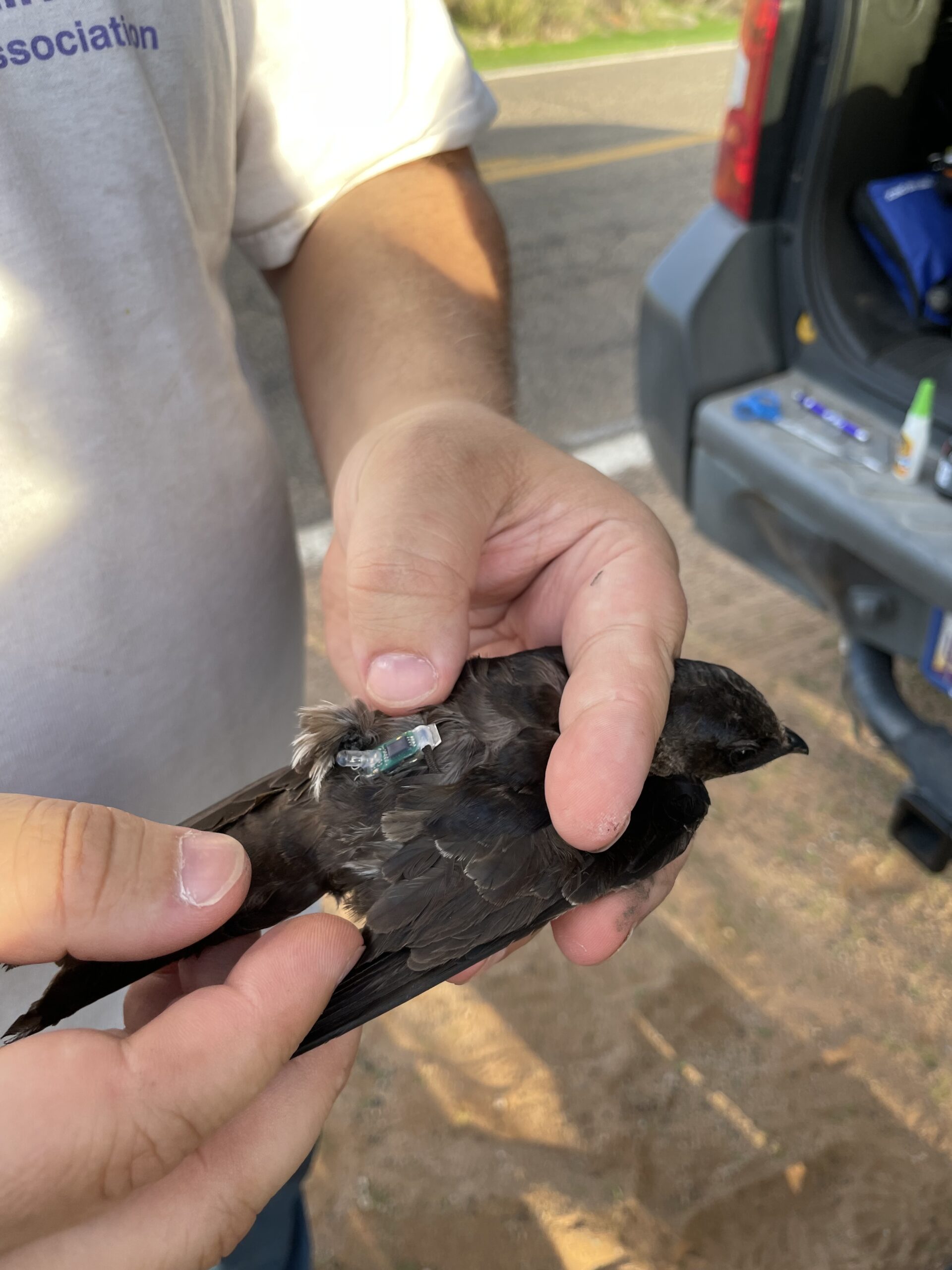
A Tracker on the Back
Used to understand the migration pathway of the desert Purple Martin and get a better idea on where we need to conserve their habitat. We catch desert Purple Martins in Arizona and attaching tiny trackers to them like little backpacks. The backpack trackers record the movement of the martins as they fly to and from their wintering grounds. Luckily, desert Purple Martins will return to the same nesting saguaro year after year so their location is fairly reliable but capturing the bird the second time can be tricky.
Lab Work
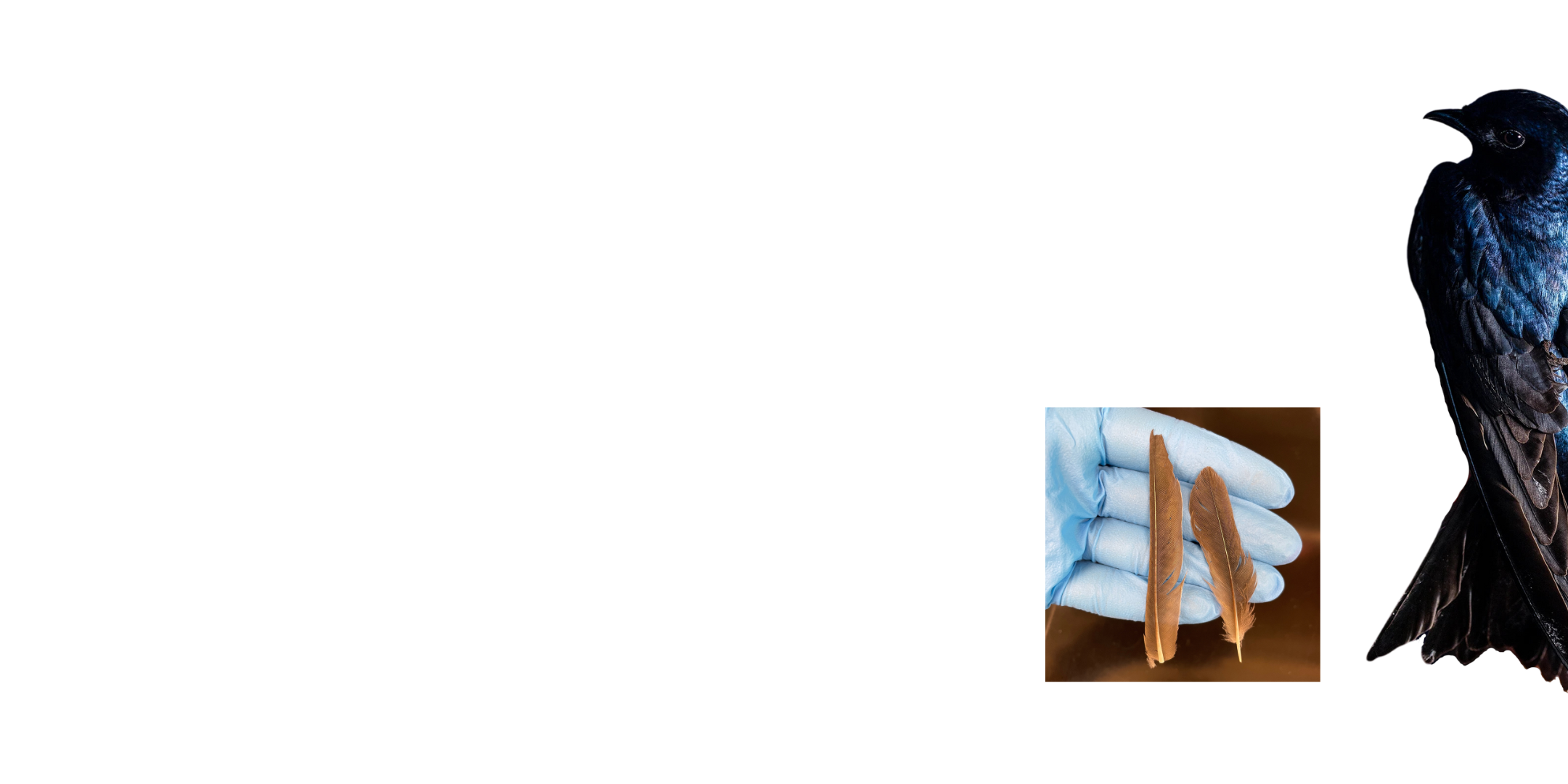
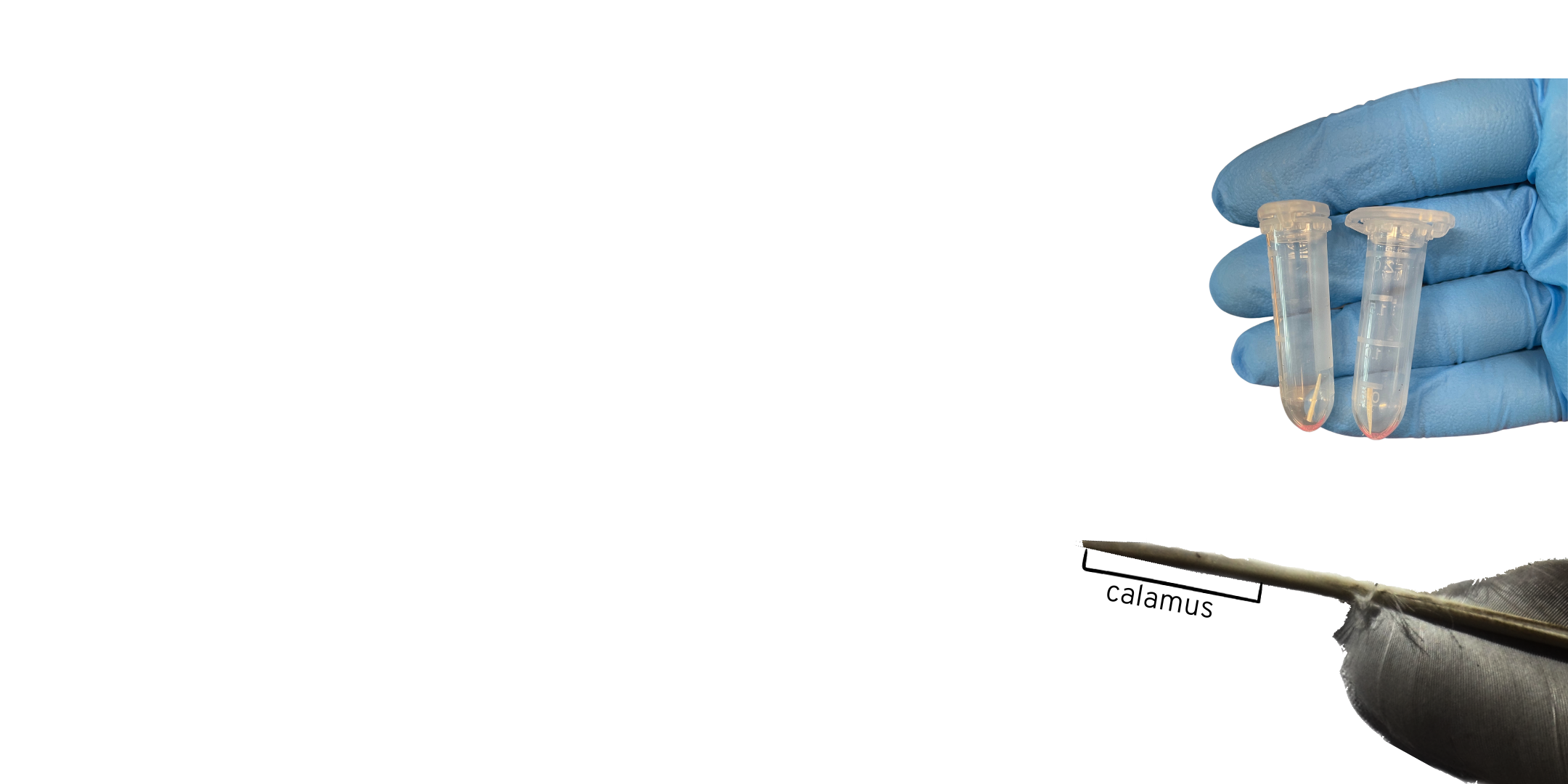
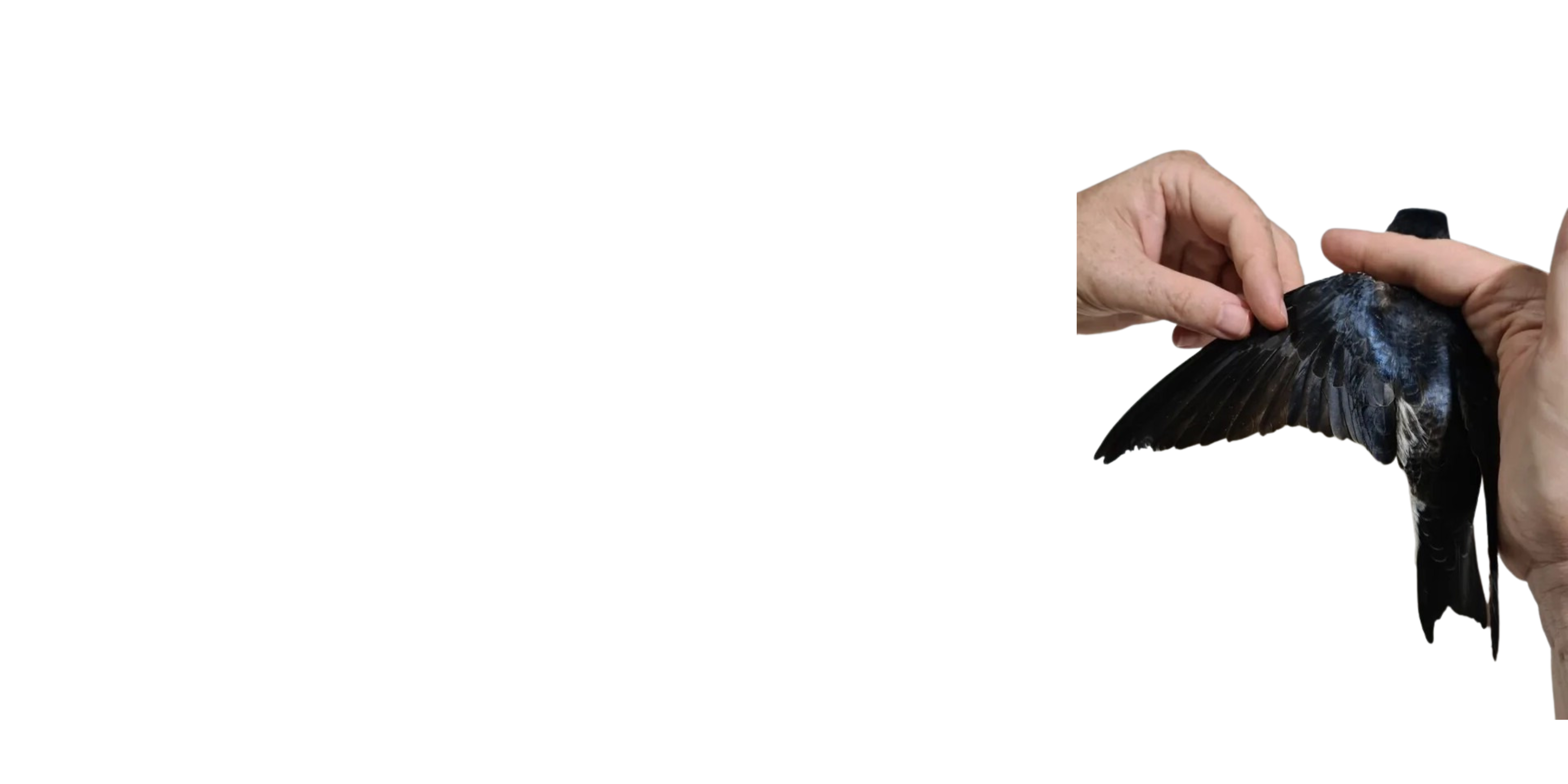
Contaminants and hormones
Purple Martin feathers grow during the winter in Brazil, thus accumulating the pollutants present in the region, as well as hormones that are produced during this period. By analyzing these substances we have clues about possible threats that the desert Purple Martins are exposed during in the wintering grounds, even collecting the feather during the breeding.








